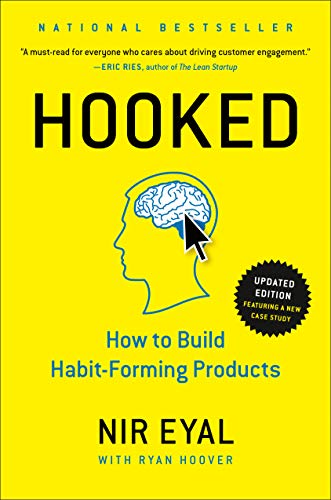Overview of “Hooked: How to Build Habit-Forming Products” by Nir Eyal Link to heading
Summary Link to heading
“Hooked: How to Build Habit-Forming Products” by Nir Eyal provides a comprehensive guide on how companies can create products that capture attention and form user habits. The book introduces the “Hook Model,” a four-step process embedded into products to encourage user engagement and foster habit formation. The process comprises Trigger, Action, Variable Reward, and Investment. Eyal delves into psychological principles and case studies to explain how successful companies use this model to develop products that are not just used, but habitually utilized by consumers.
Review Link to heading
Nir Eyal’s “Hooked” has made a significant impact on product designers, entrepreneurs, and marketers by giving them actionable insights into user behavior and engagement. The book’s strengths lie in its practical framework and examples from leading companies like Facebook, Twitter, and Instagram, making it relatable and insightful. However, a notable critique is that the book may underplay the ethical considerations of designing addictive products. Some readers have found it to be more of a guide for manipulation rather than value-driven design.
Key Takeaways Link to heading
- The Hook Model: Utilize Trigger, Action, Variable Reward, and Investment to build habit-forming products.
- Triggers: Can be external (e.g., notifications) or internal (e.g., emotions); essential to kick-start the habit loop.
- Action: Understand the simplest behavior in anticipation of a reward, ensuring it’s easy for users to perform.
- Variable Reward: Implement unpredictability to maintain user interest and engagement.
- Investment: Encourage users to invest time, data, or effort to increase the likelihood of returning.
Recommendation Link to heading
“Hooked” is highly recommended for product managers, designers, marketers, and entrepreneurs who are looking to deepen their understanding of user psychology and increase the habitual use of their products. It is particularly beneficial for those keen on creating engaging software experiences but should be read with a mindful approach considering ethical design practices.
